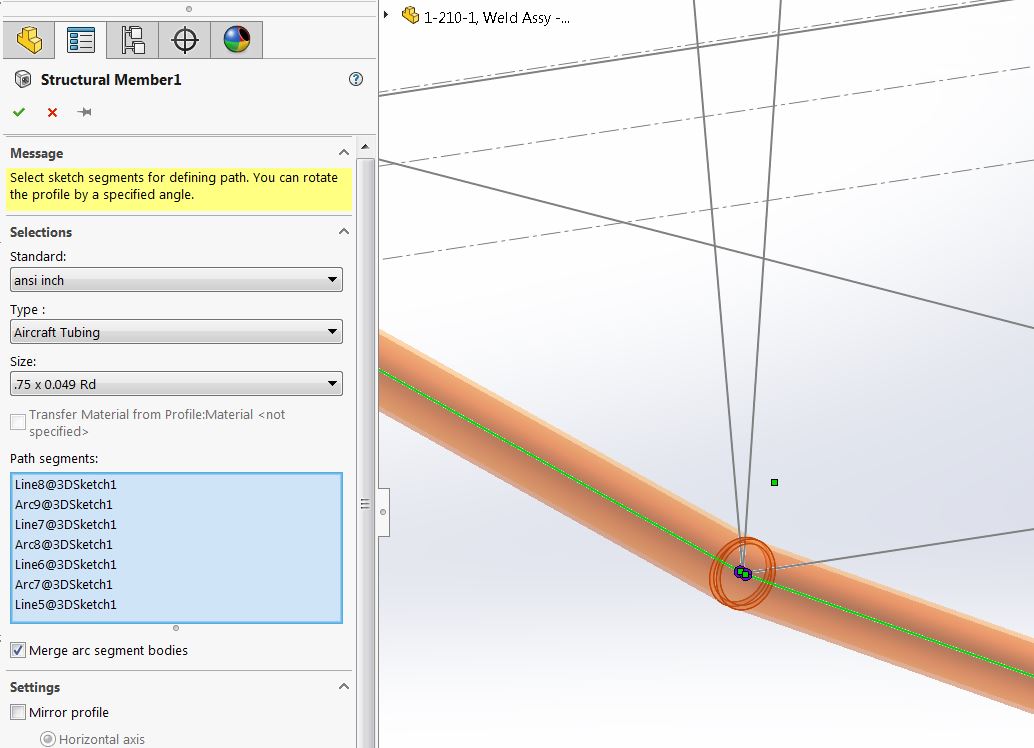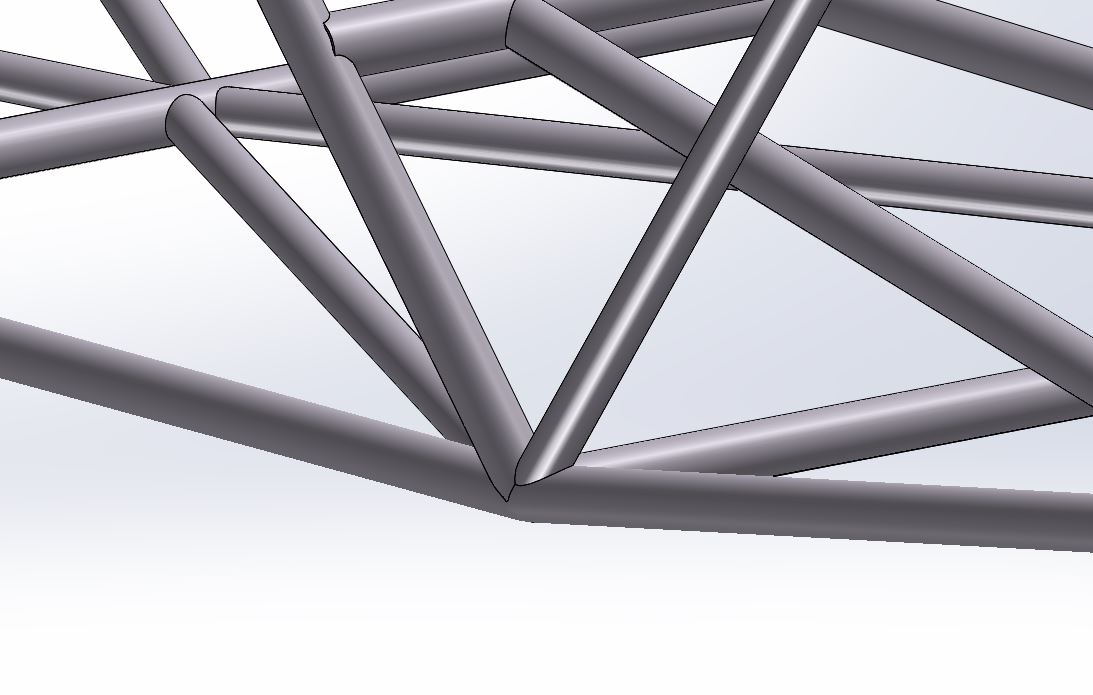The formed longerons are (or should be) a series of straight sections with small radius bends at the clusters where the longeron changes direction. Your sketches defining the longeron's path will be a series of lines and tangent arcs. When you select the path for the longeron you select in order those lines and arcs and the result is a continuous tube.

Here you see the selections I made to create the lower longeron. The radius of the arcs should all be the same and they need to be about 1x the diameter to be realistic. If the radius is too small the feature will fail to complete.

Here's a view of the entire longeron.

This is a close-up of the structure showing a cluster where the longeron is bent and the trimmed tubes meeting at the bend.
...........Bill



 Reply With Quote
Reply With Quote



